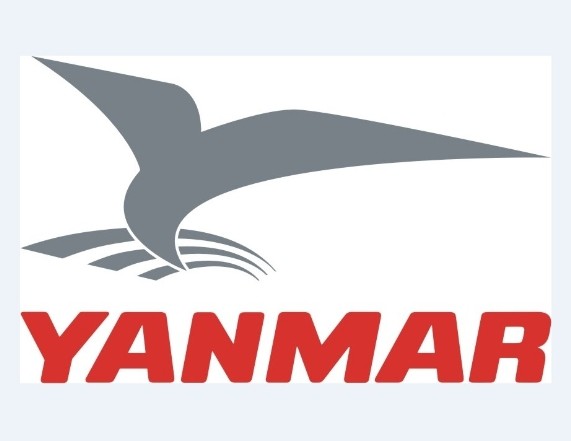Read This Yanmar B95W Mobile Excavator Operating Instructions Operator’s Manual carefully to learn how to operate and service your machine correctly. Failure to do so could result in personal injury or equipment damage.
The operating instructions are to be read and used carefully by all persons who carry out work with or on the machine before putting the machine into service for the first time and later, at regular intervals. The operating instructions allow the machine operator to familiarize himself with the machine more easily and prevent malfunctions occurring due to improper operation.
– increases reliability in use.
– extends the service life of your machine.
– reduces repair costs and downtime.
These operating and maintenance instructions contain all the information required for operating and maintaining your machine.
Manual Covers:
1 Table of contents
2 Introduction
2.1 Concerning these operating instructions
2.2 Notes on using the operating instructions
2.3 Proper use
2.4 Improper use
2.5 Warranty
2.6 Declaration of conformity
3 Safety
3.1 General safety notes
3.1.1 Safety alert symbol
3.1.2 Hazard classification
3.2 Description of symbols and danger signs
3.2.1 Hazard symbols
3.2.2 Mandatory signs
3.3 Locations of safety signs
3.3.1 Safety sign
3.3.2 Pictograms
3.4 Personal safety
3.4.1 Personal safety gear
3.5 Workspace safety
3.5.1 General work zone regulations and safe work practices
3.5.2 Switching off the machine and securing it against restarting
3.6 General safety notes
3.7 Operation
3.8 Hazard zone
3.9 Transporting persons
3.10 Stability
3.11 Stability on sloping ground.
3.11.1 Working with a grab or log clamp
3.12 Drive operation
3.13 Working operation
3.14 Operating under the risk of falling objects
3.15 Working in the vicinity of underground power lines
3.16 Working in the vicinity of overhead power lines
3.17 Operating in enclosed spaces
3.18 Working height restrictions
3.19 Interruptions in work
3.20 Hoisting operation
3.21 Changing work attachments, maintenance, and repairs
3.22 Recovery, loading, and transporting
3.23 Monitoring and inspection
3.24 Fire prevention
3.25 Notes concerning residual dangers
3.25.1 Hydraulics failure
3.25.2 Lower loading equipment emergency function
3.25.3 Releasing the residual pressure
3.26 Emergency exit
4 Initial installation and settings
4.1 Initial instruction
4.1.1 Hand over the machine and instruct the operator
5 Description
5.1 Type plate
5.2 Overview of machine
5.2.1 Guards
5.2.2 Engine
5.2.3 Hydraulic system
5.2.4 Electrical system
5.2.5 Fuse and relay box
5.2.6 Operator’s seat
5.3 Display and control elements in the operator’s compartment
5.3.1 Controls
5.3.2 Control panel
5.3.3 Keypad
5.3.4 Display
6 Maintenance
6.1 General
6.2 Care and cleaning
6.3 Inspection intervals
6.3.1 Regular oil analyses
6.3.2 Warranty
6.4 Inspection material
6.4.1 Fuels, lubricants, and coolants
6.5 Lubrication
6.5.1 Lubrication schedule
6.6 Checking, maintenance and inspection plan
6.6.1 Initial inspection (delivery inspection)
6.6.2 Daily and weekly tasks
6.6.3 Inspection plan
6.7 Maintenance and inspection tasks
6.7.1 Display
6.7.2 Engine
6.7.3 Engine cooling system
6.7.4 Air intake system
6.7.5 Fuel system
6.7.6 V-rib belt
6.7.7 AdBlue system.
6.7.8 Hydraulic oil tank
6.7.9 Hydraulic oil return filter
6.7.10 Bleeding the plunger cylinders
6.7.11 Hose-rupture safety valves of support legs
6.7.12 Steering
6.7.13 Axles
6.7.14 Wheel hub
6.7.15 Wheels
6.7.16 Brakes
6.7.17 Swing gear
6.7.18 Swing connection
6.7.19 Electrical equipment
6.7.20 Cab ventilation dust filter
6.7.21 Windshield wash/wipe system
6.8 Decommissioning
6.8.1 Preservation measures for taking the machine out of service temporarily
6.8.2 While out of service
6.8.3 At the end of the period of non-usage
6.8.4 Dismantling/disposal
7 Operation
7.1 Before operation
7.1.1 Adjustments
7.2 Starting and switching off the engine
7.3 Drive operation
7.3.1 Travel
7.3.2 Steering
7.3.3 Braking
7.3.4 Driving on roads
7.4 Switching off the machine (parking)
7.5 Work operation of the machine
7.5.1 General safety
7.5.2 Operation of the loading equipment
7.5.3 Using the machine for hoisting
7.5.4 Changing the work attachments
7.5.5 Notes for winter operation
8 Transport
8.1 Towing the machine
8.1.1 Preparation for recovery
8.2 Loading the machine using a crane
8.3 Loading the machine onto a truck
8.4 Transporting the machine
9 Technical data
9.1 Views
9.1.1 Digging envelopes
9.1.2 Envelope circle
9.1.3 Lateral parallel adjustment
9.1.4 Articulated boom – excavators adjusted
9.2 Technical data
9.2.1 Operating data
9.2.2 Equivalent vibration values
9.2.3 Drive motor
9.2.4 Electrical system
9.2.5 Chassis
9.2.6 Excavator equipment
9.2.7 Brakes
9.2.8 Hydraulics
9.2.9 Axles
9.2.10 Tires
9.2.11 Permissible loads in compliance with German Road Traffic Regulations (StVZO)
9.2.12 Load capacities
9.2.13 Work attachments
9.2.14 Supports
9.2.15 Other equipment
10 Troubleshooting
10.1 Who is allowed to rectify malfunctions?
10.2 Before troubleshooting and fault rectification
10.3 Troubleshooting and fault rectification
10.3.1 General malfunctions
10.3.2 Immobilizer faults
11 Index
And More………
============================
File Format: PDF
Compatible: All Versions of Windows & Mac ,Android
Language: English
Total Pages: 310
This manual is INSTANT DOWNLOAD. You can save time and money by purchasing this manual, which you can browse on your electronic products, or print out for reference.
We not only provide quality manuals, but we will also Provide excellent after-sales service, Customer Satisfaction Guaranteed! we offer free replenishment of any manual that we sold to you. If you lost or not found your manual, And any questions, please contact me.
support email: manualservicerepair@outlook.com
Thank you for coming and reading.
